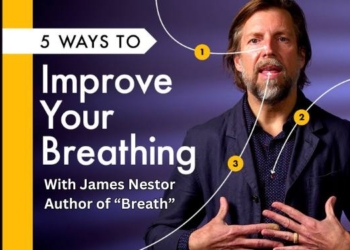
By Dr. Joseph Mercola | mercola.com
When you think of “physical activity” you may automatically think of a regimented fitness routine — going to the gym several times a week, for example. But while that is certainly part of a healthy lifestyle, what you do outside the gym plays an equally important role. Most adults spend 10 hours or more each day sitting, and research1,2 shows this level of inactivity cannot be counteracted with a workout at the end of the day. To maintain health, you really need mild but near-continuous movement throughout your waking hours.
One strategy that has been shown to have a positive impact is simply to stand up more. Increasing your daily walking is another key. According to the World Health Organization, inactivity is the fourth biggest killer of adults worldwide, responsible for 9 percent of premature deaths,3 and walking more could go a long way toward reducing this risk.
Are You Walking Enough for Optimal Health?
Several studies have confirmed the value of walking, showing it improves and maintains health, and boosts longevity. In one, 20 to 25 minutes of walking per day (140 to 175 minutes per week) was found to add anywhere from three to seven years to a person's life span.4
More recent research5,6 suggests as little as two hours (120 minutes) of walking per week may reduce mortality risk in older adults, compared to inactivity.7 Meeting or exceeding the activity guidelines of 2.5 hours (150 minutes) of moderate activity per week in the form of walking lowered all-cause mortality by 20 percent.
Walking was particularly effective for lowering the risk of death associated with respiratory diseases. Walking for six hours or more each week lowered the risk of death from respiratory diseases by 35 percent, compared to inactivity. It also lowered their risk of heart disease by 20 percent and cancer by 9 percent. As noted by the authors:
“… [W]alking below minimum recommended levels is associated with lower all-cause mortality compared with inactivity. Walking at or above physical activity recommendations is associated with even greater decreased risk. Walking is simple, free, and does not require any training, and this is an ideal activity for most Americans, especially as they age.”
The Science Is Unequivocal — Walking Is Good Medicine
Research published in 2012 found brisk walking improved life expectancy even in those who are overweight.8 Smokers may also increase their life span by nearly four years by engaging in physical activity,9 such as taking regular walks. Smokers who were physically active were also 55 percent more likely to quit smoking than those who remained inactive, and 43 percent less likely to relapse once they quit.
Former smokers who kept up their physical activity increased their life expectancy by 5.6 years on average, reducing their all-cause mortality risk by 43 percent. Speaking of smoking, chronic sitting actually has a mortality rate similar to this toxic habit.10 Chronic sitting even raises the risk of lung cancer by over 50 percent. A Norwegian study11,12,13 also showed that regular exercise is as important as quitting smoking if you want to reduce your mortality risk.
About 5,700 older men were followed for about 12 years in this study, and those who got 30 minutes of exercise — even if all they did was light walking — six days a week, reduced their risk of death by about 40 percent. Getting less than one hour of light activity per week had no effect on mortality in this study, highlighting the importance of getting the “dosage” right if you want to live longer.
Other studies have shown walking can be tremendously beneficial for people struggling with chronic diseases such as obstructive pulmonary disease (COPD) and cardiovascular disease. In one, COPD patients who walked 2 miles a day or more cut their chances of hospitalization from a severe episode by about half.14,15
Another study16 found that daily walking reduced the risk of stroke in men over the age of 60. Walking for an hour or two each day cut a man's stroke risk by as much as one-third, and it didn't matter how brisk the pace was. Taking a three-hour long walk each day slashed the risk by two-thirds.
Chronic Sitting Is a Recipe for Metabolic Disease
While you may not think of standing as “movement” in the same way walking is, the act of carrying your own body weight on your legs, even if just standing upright, is enough to activate muscular and cellular systems that process blood sugar, triglycerides and cholesterol, all of which are mediated by insulin. As a result, your risk of obesity and metabolic disease decreases.
There are over 10,000 published studies confirming the fact that chronic sitting is an independent risk factor for ill health and early death. For example, a 2012 meta-analysis17 found those who sat for the longest periods of time on a daily basis were twice as likely to have diabetes or heart disease, compared to those who sat the least. In another study,18 sittings for more than eight hours a day was found to raise your risk of Type 2 diabetes by a whopping 90 percent.
Similarly, studies show standing up has a beneficial effect on your metabolic health. One study19,20 that examined the relationships between standing time, obesity and metabolic syndrome — alongside and independent of regimented exercise — found that men and women who stood up for at least six hours a day had a 32 and 35 percent lower risk of obesity respectively.
Those who regularly stood up and met weekly exercise guidelines also had a lower risk of metabolic syndrome, compared to those who either did not meet exercise guidelines and/or sat down most of each day. Among regular exercisers, there was a clear dose-response relationship between the amount of time they stood up and their risk of obesity and metabolic syndrome.
What a Single Hour of Sitting Does to Your Body
Part of what makes sitting so detrimental to your health is the fact that it dramatically reduces blood flow, thereby reducing the efficiency of biological processes. A study21,22 published in 2014 found that a single hour of sitting impaired blood flow to the main leg artery by as much as 50 percent!
On the upside, simply taking a five-minute walk for every hour spent sitting was found to ameliorate the heart disease risks associated with chronic sitting. However, the key is the frequency of movement. You need to break up the sitting at least once an hour or more. Reserving all of your movement for the end of the day will not counteract the damage incurred while sitting all day long. One 2014 study23 found that six hours of uninterrupted sitting effectively counteracted the positive health benefits of a whole hour of exercise.
Basically, this means that even if you spend two to three hours in the gym each week, if you have a full-time sit-down job, you're still incurring damage on a daily basis that those gym sessions cannot make up for. It also means that many of the benefits of those workouts remain unrealized.
Encouragement for Beginners
Ideally, you'd want to sit for a maximum of about three hours a day — a far cry from today's norm — and for no longer than 50 or 60 minutes at a stretch. If you've not yet addressed this part of your lifestyle, the idea of standing and staying in motion for the most part of the day may seem daunting. There's no doubt it requires you to change in more ways than one. I would encourage you to not give up before you've even begun and just start with one small change.
For example, you may park further away from your office to force yourself to walk a little in the morning. Once that has become a habit, add another small change. Maybe reorganize your desk to force yourself to frequently stand up to reach a commonly used item, such as the phone or a printer. There really are countless ways to increase the amount of movement you can get each day.
It's just a matter of not taking the easy way out all the time. However you go about it, do make an effort to reduce the overall amount of time you spend sitting down each day. A standing desk is a great option, with or without a wobble-board. In the beginning, you probably will not be able to stand all day at work. That's OK. Start with a few minutes per hour and work your way up. Be patient with yourself. Persist, and remember that each small step will eventually add up. A fitness tracker can be a helpful aid to track your progress.
The Optimal Amount of Exercise for Longevity
For maximum longevity, a more formal exercise routine is also required. You could view the non-exercise movement as the foundation that keeps your biology functioning on a moment-to-moment basis, while more regimented and higher-intensity exercise is what allows you to really leverage and optimize your entire system, building stronger muscles and more robust cardiovascular function. But just how much exercise do you need?
Research reveals there is indeed a “Goldilocks' zone” in which exercise creates the greatest benefit for health and longevity. Data also shows the intensity of your exercise plays a role. In one study,24 data were collected from health surveys involving 661,000 adults and 14 years' worth of death records. Exercise habits ranged from no exercise at all, to 10 times the recommended amount (25 hours per week and over).
Not surprisingly, those who did no exercise at all had the highest risk of premature death. Those who met current recommendations of 150 minutes per week of moderate exercise lowered their risk of death by 31 percent compared to those who did not exercise, but it was those who tripled the recommended amount of exercise that gained the greatest benefits. Exercising at moderate intensity for 450 minutes per week (just over an hour a day), lowered their risk of premature death by 39 percent, compared to non-exercisers.
Beyond that, the benefits actually began to evaporate, and those who exercised at 10 times above the recommended level had the same mortality risk reduction as those who met the guidelines of 150 minutes per week (31 percent). A second study,25 which focused on intensity, found that those who spent 30 percent of their exercise time doing more strenuous activities gained an extra 13 percent reduction in early mortality, compared to those who exercised moderately all the time and never really picked up the pace.
Walking Can Be a High-Intensity Exercise
If you're out of shape and/or overweight, the idea of high-intensity interval training (HIIT) can seem too daunting to even attempt. The elderly may also shy away from high-intensity exercises for fear of injury. Again, don't allow such concerns to overwhelm you and prevent you from getting started. Here, walking can be just the strategy you've been looking for. Not only is walking one of the easiest exercises to perform, no matter what your age or fitness level, it can also be turned into an effective high-intensity exercise.
For the last decade, Dr. Hiroshi Nose and colleagues at the Shinshu University Graduate School of Medicine in Matsumoto, Japan, have developed walking programs for the elderly.26,27 In light of the benefits associated with HIIT, Nose created a regimen of fast walking and gentle strolling, to see if this kind of a program might provide greater fitness benefits than walking at a steady pace. The short answer is, it does.
The program he developed consists of repeated intervals of three minutes of fast walking — aiming for an exertion level of about six or seven on a scale of one to 10 — followed by three minutes of slow strolling. Completing five sets of these intervals, totaling 30 minutes of walking, at least three times a week, led to significant improvements in aerobic fitness, leg strength, and blood pressure.
Again, the best results are gained by breaking the walking up throughout the day, so instead of doing 30 minutes once, aim for three sessions of 10 minutes.
Exercise Is Great Preventive Medicine
Both research and experience confirm that walking is powerful medicine, and you can make it even more powerful by incorporating principles of HIIT. Simply alternating between speed-walking and slow strolling will allow you to maximize your rewards. I believe aiming for about 10,000 steps a day might be ideal for most people, over and above your regular exercise program.
If you're currently not doing anything in terms of fitness, please do consider getting more standing and walking into your day. Chances are you'll start feeling more energized and less stressed, which may spur you on to a more regimented fitness program.
No matter what your age, exercise can provide enormous benefits for your health, and if you're over 40, it's especially important to either start or step up your exercise program. This is the time of life when your physical strength, stamina, balance, and flexibility start to decline, and exercise can help to counteract most age-related decline.
For more tips on getting started, check out my fitness page, Mercola Peak Fitness, which is a treasure trove of fitness videos and articles related to exercise. Ideally, establish a comprehensive exercise program that includes high-intensity exercises, strength training, core exercises and stretching.
















I was diagnosed with COPD & emphysema in May of this year. I have been smoke free for 14 months. I quit because my first granddaughter was going to be born! I didn’t want to smell like an ashtray when I held her! Since then I have been having trouble breathing, gained twenty pounds since quitting smoking I was exercising and not losing any weight, seeing a dietician and being told to quit eating practically! I was depressed and feeling like nothing is working! There’s got to be a way to make me feel like my chest isn’t so tight feeling like something is stuck in my chest. I lost touch with reality.I started on Health Herbal Clinic COPD Herbal formula treatment in August 2017, i read alot of positive reviews on their success rate treating COPD disease through their Herbal formula and i immediately started on the treatment. Just 7 weeks into the Herbal formula treatment I had great improvements with MY breething ,I am unbelievably back on my feet again, this is a breakthrough for all COPD Patients, visit Health Herbal Clinic official website ww w . healthherbalclinic. net or email info@ healthherbalclinic. net.This treatment is incredible!